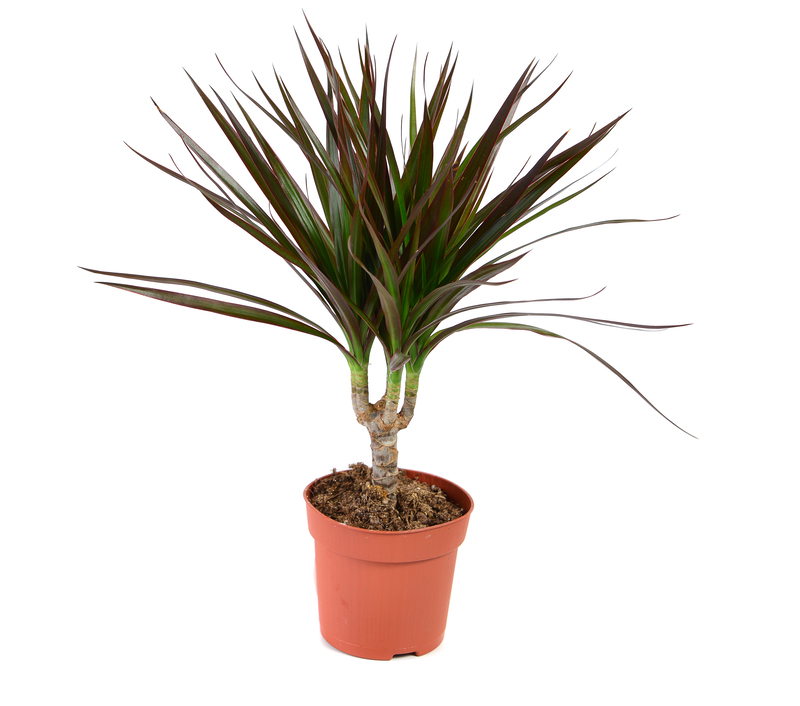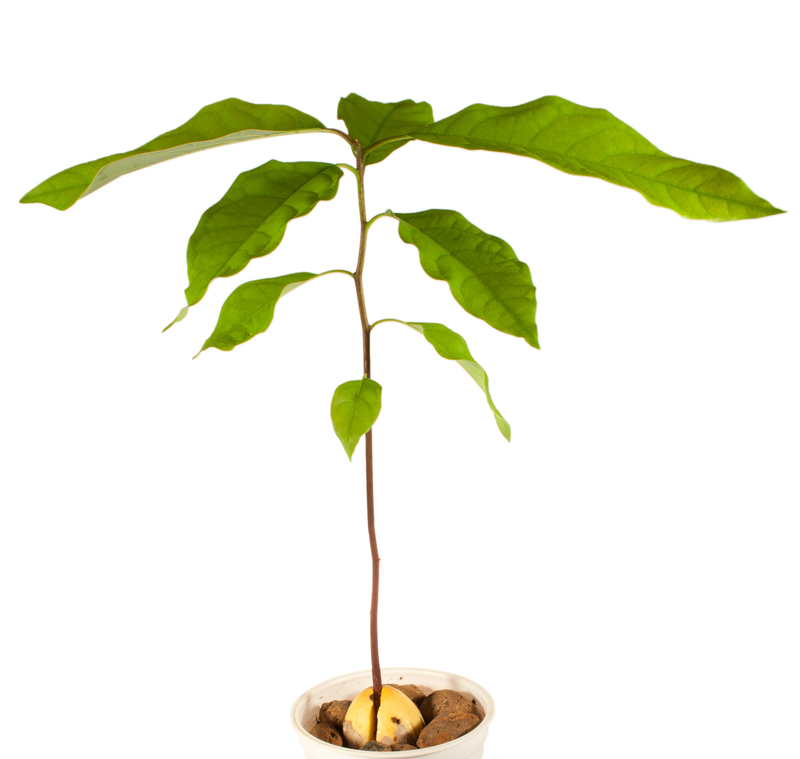Developing a Learning and Play Haven in Your Garden
Posted on 22/08/2025
Developing a Learning and Play Haven in Your Garden
Creating a vibrant learning and play haven in your garden is not just about adding a few toys or planting some flowers. It's about transforming your outdoor space into an engaging, educational, and safe retreat where children and families can explore, learn, and grow together. Whether you have a spacious backyard or a modest patch of green, any garden holds the potential to become a magical hub of discovery and fun. In this comprehensive guide, we'll explore strategies, ideas, and practical steps to design and cultivate a garden learning and play area that will nurture creativity, cognitive development, and appreciation for nature.

Why Create a Learning and Play Haven in Your Garden?
A well-designed garden playground is more than just entertainment for kids--it provides a multitude of benefits for children's minds, bodies, and emotional development. By incorporating learning elements and interactive play structures, you'll be promoting:
- Physical Fitness: Active play in gardens improves coordination, balance, and overall health.
- Cognitive Skills: Nature-based activities increase problem-solving, critical thinking, and creativity.
- Emotional Resilience: Green outdoor spaces offer a calming effect, reduce stress, and build confidence.
- Social Abilities: Play areas encourage cooperation, communication, and sharing among children.
- Eco-Awareness: Early exposure to gardening instills a lifelong respect for the environment.
Whether you're growing a learning garden for toddlers, creating an outdoor classroom for homeschooling, or simply hoping to make your backyard more appealing to curious minds, you'll find endless inspiration in the ideas below.
Step 1: Planning Your Garden Learning and Play Area
Assessing Your Space and Budget
The first step in developing your garden learning and play sanctuary is assessing the available space and resources. Consider:
- Size and Shape: Identify open areas, shade, and existing structures.
- Sunlight and Soil: Note where the sun falls, soil quality, and drainage.
- Safety: Check for hazards and ensure visibility for supervising children.
- Budget: List materials you can reuse, upcycle, or need to purchase.
A well-planned layout makes all the difference between a chaotic, cluttered space and a harmonious, stimulating learning garden.
Setting Your Goals
Ask yourself:
- Who will use the garden (ages, abilities, interests)?
- What experiences do you want to foster? (STEM, sensory, imagination, movement, etc.)
- What maintenance level can you commit to?
Dividing the Garden into Zones
Successful outdoor learning and play havens often feature differentiated "zones." Here are a few ideas:
- Active Play Zone: Climbing frames, swings, and slides for gross motor skills.
- Sensory Garden: Plant beds with fragrant herbs, soft grasses, and edible greens.
- Creative Arts and Crafts Area: Outdoor easels, chalkboards, and craft tables.
- Quiet Reflection Zone: Comfy benches or storybook nooks surrounded by tall plants.
- Wildlife or Nature Zone: Bug hotels, bird feeders, and butterfly bushes for observing creatures.
- Science and Exploration Spot: Weather stations, magnifying glasses, and rock collections.
By assigning roles to different areas, you'll cater to diverse interests and promote an ever-evolving cycle of outdoor learning and play.
Step 2: Designing Your Outdoor Learning and Play Haven
Building with Nature
A nature-inspired garden play space invites children to connect deeply with the environment. Harness the beauty of natural materials wherever possible:
- Wooden logs for balancing beams or seating
- Tree stumps as stepping stones or tables
- Rocks and pebbles for borders, mosaics, or digging
- Bamboo for teepees, plant supports, or fencing
- Living willow tunnels or domes for imaginative hideaways
Even repurposed household items--such as old pots, crates, and pallets--can make fantastic planters, storage, or playful barriers.
Safe and Secure Environments
Safety is essential when developing outdoor learning and play havens. Ensure:
- Non-toxic, smooth-edged materials are used for all play structures
- Soft landing zones (mulch, grass, or rubber matting) under climbing frames
- Shaded areas to protect from sun exposure
- Secure fencing to prevent wandering and ensure peace of mind
- Tools and chemicals are always stored out of children's reach
A Garden for All Seasons
A truly engaging learning and play garden is enjoyable year-round:
- Evergreen shrubs and hardy perennials for winter color and shelter
- Berries and fruit trees for autumn harvests
- Spring bulbs and wildflowers for a summer burst of life
Plan for seasonal activities--like leaf collecting in fall, bug hunts in summer, or frost painting in winter--to ensure your garden is always a place to explore.
Step 3: Planting a Living Classroom
Creating a Sensory Garden
Invite children to engage all five senses with thoughtfully chosen plants:
- Sight: Sunflowers, nasturtiums, purple bearded irises
- Smell: Lavender, mint, thyme, and sweet peas
- Touch: Lamb's ear (soft leaves), ornamental grasses, moss
- Taste: Strawberries, snap peas, cherry tomatoes, basil
- Sound: Bamboo, ornamental grasses, wind chimes
Pathways made from different textures--sand, bark, gravel--turn a garden walk into a sensory adventure. Arrange beds where children can easily reach, smell, and gently handle the plants.
Learning Through Gardening and Plant Care
A gardening space for children is a living laboratory. Planting from seed, watering, harvesting, and composting all teach:
- Cycles of growth and seasonality
- Responsibility and patience
- Math and literacy: measuring, recording, and labeling plants
- Critical science concepts: photosynthesis, pollination, and sustainability
Start with easy-care plants like sunflowers or radishes, or create themed gardens--such as a pizza garden (tomatoes, basil, oregano) or a butterfly garden (milkweed, alyssum, butterfly bush).
Step 4: Play Structures and Outdoor Learning Activities
Natural and DIY Play Equipment
- Build a mud kitchen for sensory-rich pretend play
- Hang a tire swing or climber from a sturdy tree
- Arrange straw bales and crates for building forts or obstacle courses
- Paint rocks for games like tic-tac-toe or color hunts
- Install a chalkboard wall or mount old whiteboards for creative expression
When designing garden play areas, prioritize flexible and open-ended equipment that encourages imagination and collaboration.
Outdoor Learning Stations
- Mini-Greenhouse: Start seeds or observe plant growth up close
- Water Table: Explore floating, sinking, and simple engineering concepts
- Weather Station: Track rainfall, temperature, and cloud patterns
- Math Area: Use pebbles, sticks, or leaves for counting and patterns
- Wildlife Observation: Set up birdhouses, insect hotels, and butterfly feeders
Integrate *seasonal nature journals* for kids to draw, write, and reflect on their discoveries, blending literacy and science in a hands-on environment.
Step 5: Incorporating Outdoor Art and Culture
Creative Corners for Expression
- Provide outdoor easels with washable paints
- Create a mural wall where children can contribute art
- Use pebbles, colored stones, or ceramic tiles for mosaic projects
- Include a storytelling nook with comfortable seating and garden-themed books
Encouraging artistic expression in your garden learning and play haven also fosters a sense of ownership and pride.
Celebrating Diversity and Community
Gardens are wonderful places to honor global cultures and heritage. Try:
- Planting vegetables or herbs from different cuisines
- Marking world festivals with themed crafts and decorations
- Hosting community days for families to garden and play together
Step 6: Encouraging Sustainability and Environmental Stewardship
Eco-Friendly Gardening Practices
- Start a compost bin for food scraps and garden waste
- Set up rainwater collection barrels for watering plants
- Use native plants to attract local wildlife and conserve water
- Emphasize "reduce, reuse, recycle" when building or maintaining play installations
Developing an outdoor learning and play area rooted in sustainability fosters a sense of responsibility for the planet--and a love for nature that lasts a lifetime.
Step 7: Maintaining Your Garden Learning and Play Haven
Involving Children in Upkeep
Regular maintenance can be part of the learning experience. Encourage kids to:
- Help with watering and weeding
- Check for safety on play equipment
- Plan and plant new crops or flowers each season
- Organize garden toys or sort materials for recycling
Celebrating small victories--like the first tomato harvest or the hundreds day in the garden--creates cherished memories and a sense of accomplishment.
Regular Refresh and New Ideas
Keep your garden play haven vibrant by rotating activities, adding new plants, and updating learning stations based on your children's evolving interests.

Garden Learning and Play Haven Ideas for Small Spaces
Even if you have only a balcony, patio, or tiny plot, you can create an inspiring learning and play nook:
- Use vertical gardens and hanging planters for herbs and strawberries
- Grow sunflowers or climbing beans along walls or trellises
- Arrange pots in patterns for counting and color games
- Set up portable sand trays, water tables, or storage bins for easy clean-up
- Hang small chalkboards or attach whiteboards to fences
Small spaces can deliver big rewards when thoughtfully designed.
Conclusion: Cultivating Joy, Wonder, and Growth in Your Learning and Play Garden
Developing a learning and play haven in your garden is a deeply rewarding project that can transform family life, learning, and health--one season at a time. By balancing playful creativity with hands-on learning, you create an outdoor space where children's imaginations soar and their understanding of the natural world blossoms.
From sensory gardens and wildlife zones to art corners and eco-friendly play equipment, the possibilities truly are endless. With just a dash of inspiration and a willingness to get hands dirty, your garden will soon become a cherished haven--a place of laughter, discovery, and lifelong memories.
If you're ready to start your garden learning and play haven today, remember: every magical journey begins with a single seed.

